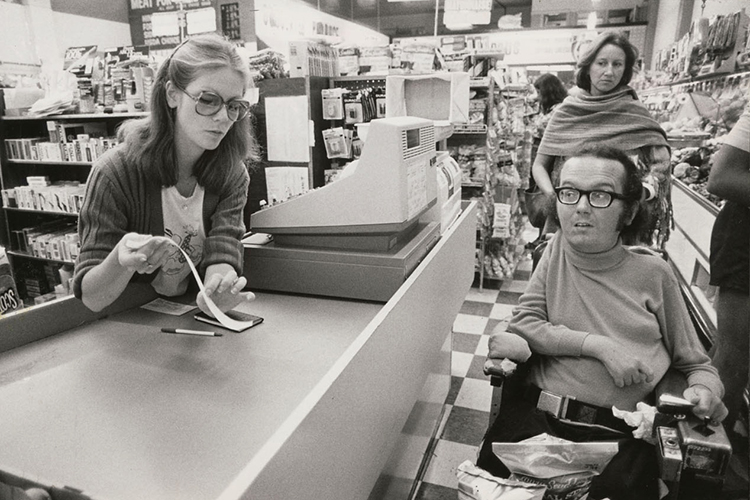At 20, Berkeley’s Disability Studies shines with renewed energy
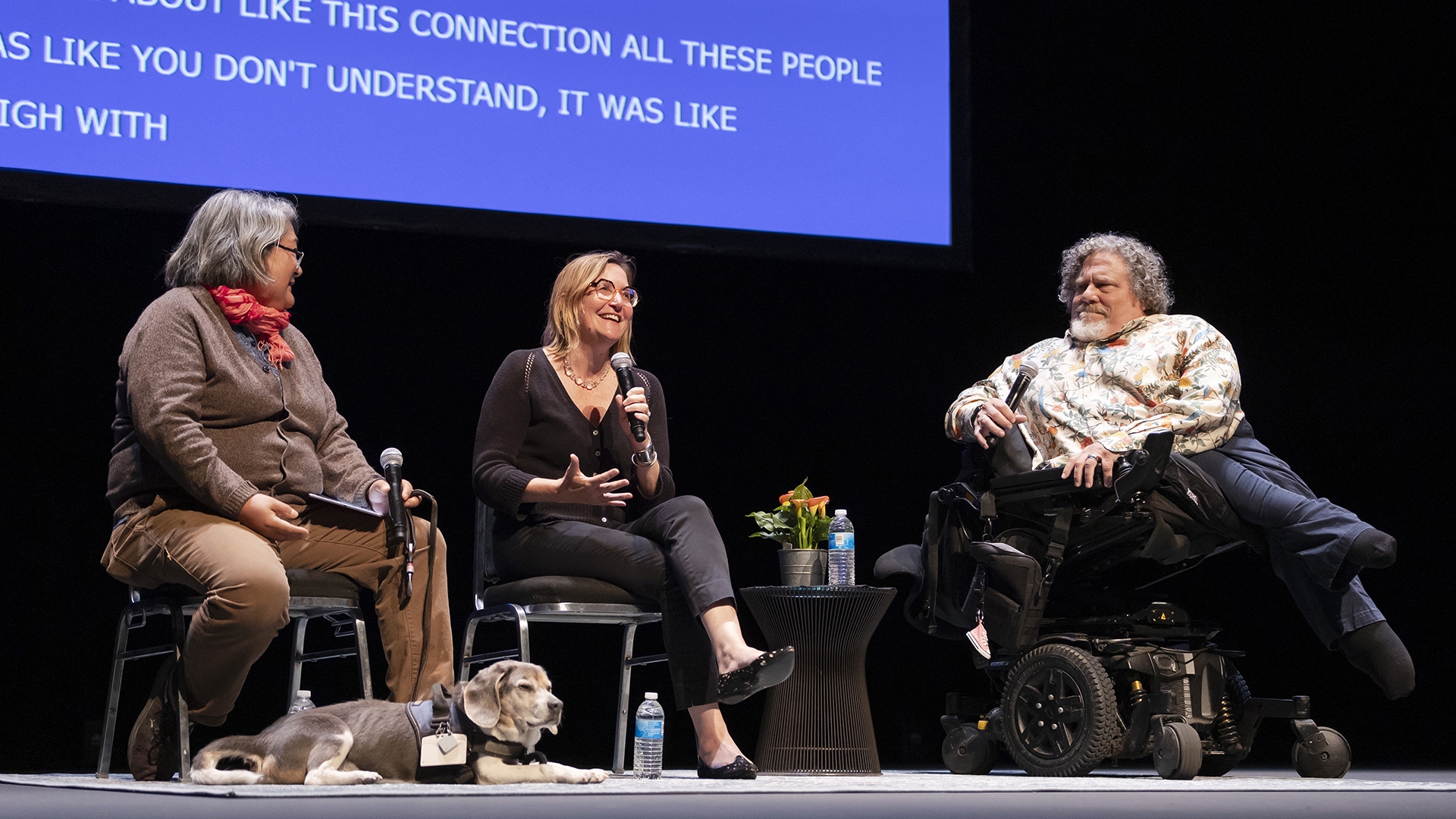
Brittany Hosea-Small for UC Berkeley
October 2, 2023
When Ann Wai-Yee Kwong entered UC Berkeley as a student, she had never heard of disability studies, an interdisciplinary field that examines the social structures and cultural depictions that shape — and are shaped by — the experiences of people with disabilities.
“There’s no chapter in high school that focuses on disability,” said Kwong, who is blind. “The idea that disability is something you can be proud of — that it’s a field with rich socioeconomic and historical identity you can study — was relatively new to me.”
Kwong is now the coordinator of the Disability Cultural Community Center, which opened its doors on campus last October. In addition to creating a welcoming space for students with disabilities to gather, Kwong seeks to draw attention to the ways in which different academic subjects intersect with disability.
The Berkeley disability community’s advocacy was critical to establishing the center, just as it helped create the disability studies minor 20 years ago. First-year students are receiving a vivid lesson in disability activism this fall through the On the Same Page program, which has selected the Oscar-nominated documentary Crip Camp: A Disability Revolution for a series of screenings and events. On the Same Page builds intellectual community around a piece of work that has changed how we experience the world.
This year’s planning committee for On the Same Page is a who’s who of disability studies lecturers at Berkeley, with the Department of English — one of 130 academic units on campus — holding half of the six spots. That department’s strong presence is a reflection of decades of work to integrate disability scholarship into the curriculum.
Berkeley’s disability history
UC Berkeley has long been a center of thought and action around disability.
Jacobus tenBroek, a professor of speech (now called rhetoric) and political science, who was blind, published an influential article in 1966 that placed disability rights within the civil rights framework. In the 1970s, Raymond Lifchez, a professor of architecture and of city and regional planning who passed away in September, established many of the core principles of accessible design. Around the same time, his colleague, Frederick Collignon, a professor of city and regional planning, created studio classes on the social policy of disability. And, of course, many Berkeley alums — including Judith Heumann, Ed Roberts and Hale Zukas — fundamentally altered society’s thinking about disability.
Josephine Miles, the first woman to receive tenure in the English department in 1947, was a digital humanities trailblazer who pioneered the use of computing in literary analysis and mentored generations of poets. Miles also had severe, chronic arthritis that required round-the-clock assistance. When she passed away in 1985, Miles bequeathed her home to the campus for creative writing seminars and housing for visiting poets.
English professor Susan Schweik was working on a biography of Miles when she happened upon a 1995 issue of Radical Teacher that focused on disability studies. The articles opened a window into an academic discipline Schweik had yet to encounter. Schweik began teaching a class on literary depictions of disability, which has become a core course offered by the Disability Studies program.
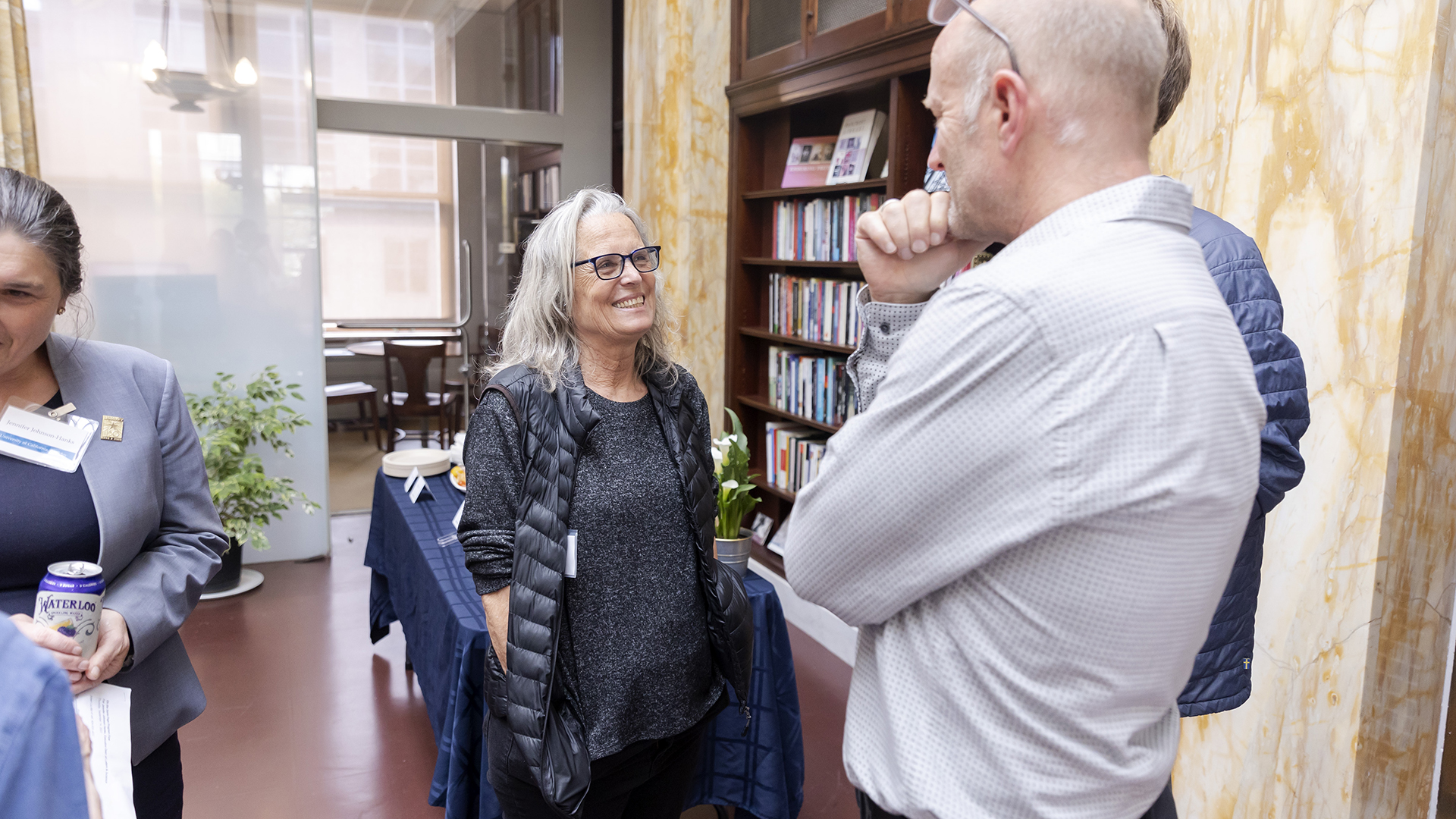
Brittany Hosea-Small for UC Berkeley
One day, Schweik received a University of California flyer announcing funding for developing new curricula. Schweik showed the flyer to her student, Marissa Shaw, who brought it to the World Institute on Disability — a research and advocacy organization founded by Berkeley alums. Unbeknownst to Schweik, the organization had been partnering with the Berkeley campus to teach classes and sponsor students.
Schweik met with two of the institute’s staff researchers, Marsha Saxton and Devva Kasnitz, and the three planned out what became Berkeley’s Disability Studies program. Schweik was initially reluctant to serve as the program’s figurehead because she was not disabled. However, Saxton persuaded her to join Collignon as a co-director and launch the program.
“Marsha was everything,” said Schweik. “We were close friends and co-conspirators.”
Disability studies comes into its own
Saxton, who passed away in 2021, was brought on as a lecturer, teaching both Intro to Disability Studies and Women and Disability. A majority of Saxton’s students did not identify as having a disability, but she made sure they all felt welcome. Saxton encouraged questions from non-disabled students as they reevaluated everything they thought they knew about the subject matter. Students with disabilities received the validating experience of having intense issues of disability fully recognized and explored. Saxton firmly believed that disability studies courses could change students’ lives.
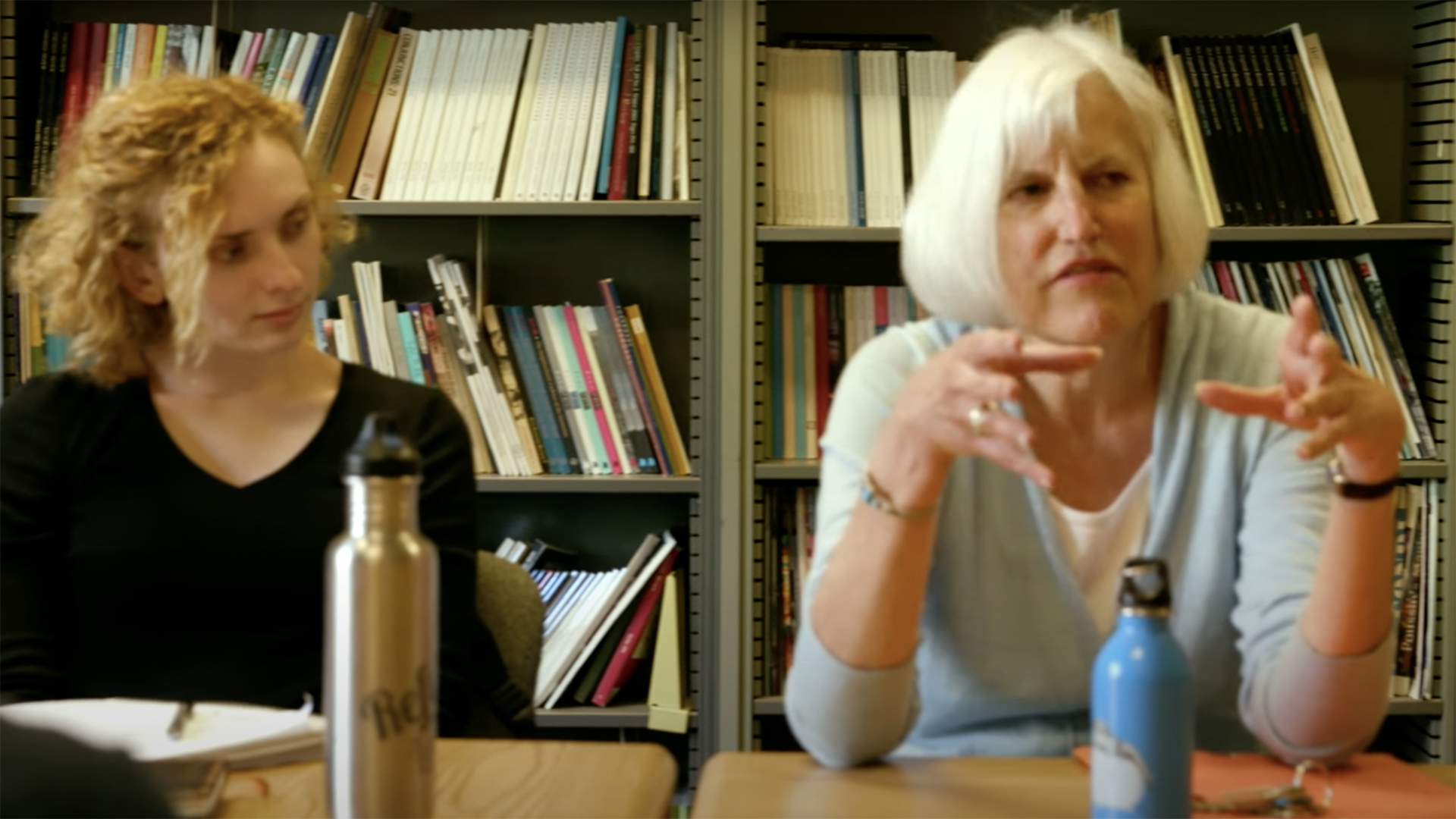
Screenshot from UC Berkeley Events vi
Georgina Kleege, who joined the English department in 2003 and co-directed the Disability Studies program for most of her time at Berkeley, felt similarly about the curriculum’s potential for students’ personal growth. Many of her students were pre-med majors.
“They understood that in their future careers in health care, they might be the first person to diagnose a disabling condition,” said Kleege. “Having some prior knowledge of the lived experiences of people with disabilities, the assistive technologies they use, and the inclusive policies which can serve them better will surely lead to better outcomes for those patients.”
Kleege noted that many people will experience disability over the course of their lives, whether in themselves, their elders or their children. According to the Centers for Disease Control and Prevention, approximately one in four adults in the U.S. has a disability. Disability activists and scholars have long sought to change society’s harmful attitudes toward this large and diverse population.
“Disability studies promotes the idea that disability is not an issue of an individual body that doesn’t function or look like the majority of human bodies,” said Kleege. “Disability is caused by a built environment and social practices that were designed for one kind of embodiment, but which excludes other types of embodiment. The solution, then, is not about fixing individuals; it’s about fixing architecture, technology, public transport, educational policies and so forth.”
As more students and professors showed interest in the field, it became embedded in university structures. The National Institute on Disability and Rehabilitation Research launched the Ed Roberts Post-Doctoral Fellowships in Disability Studies at Berkeley. The American Studies program began a concentration on disability studies for its major.
“By 2000, we were working hard on establishing a minor in disability studies,” said Schweik. They succeeded in 2003. “Our model was the early LGBTQ minor that had been established not long before. We gathered an interdisciplinary faculty advisory board from across campus, including the great Ray Lifchez. Students like Marissa Shaw always led the way.”
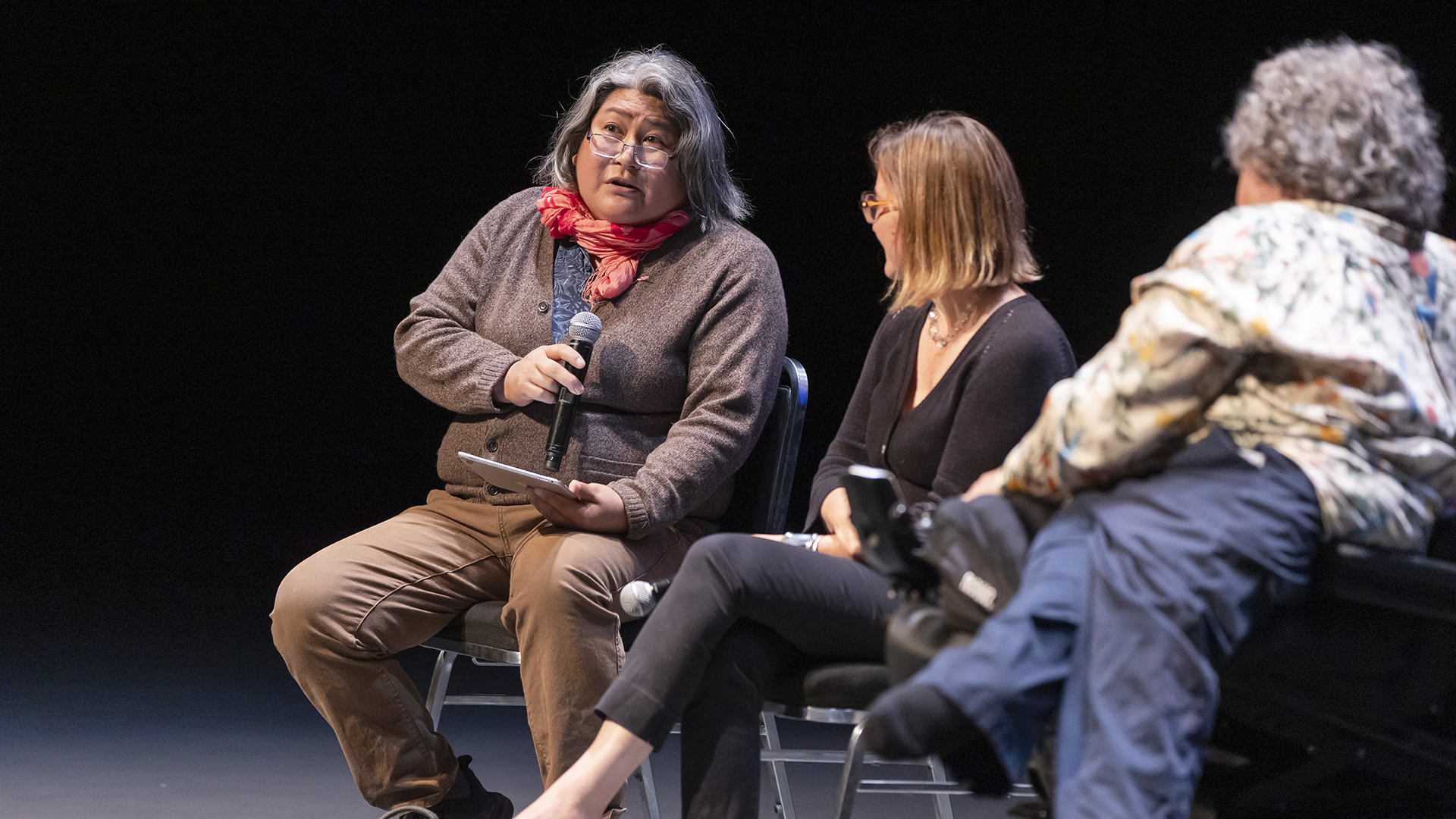
Brittany Hosea-Small for UC Berkeley
Though formally housed in the Division of Undergraduate Studies, the presence of Disability Studies is now felt in departments across Berkeley, from art practice to linguistics to sociology. The Haas family, whose donation created what is now the Othering and Belonging Institute, provided funds to create a disability studies cluster within the organization. Though many lament the recent losses of long-time leaders, they appreciate the new energy and insights that additional faculty members — like Karen Nakamura in anthropology; Victor Pineda in city and regional planning; Sunaura Taylor in environmental science, policy and management; and Mel Chen in gender and women’s studies — have brought to the field.
“When I first taught Literature and Disability, I probably had around 20 students,” said Kleege, who started at Berkeley in 2003. “The last time I taught in 2021, there were around 100 enrolled.”
Heading toward the future
This year marks the 20th anniversary of the Disability Studies minor, and it’s a busy time for disability education on campus. Dozens of courses this fall will integrate Crip Camp into their lesson plans. Many professors dream of creating a disability studies major to elevate the discipline.
Kwong said the Disability Cultural Community Center is preparing film screenings, exploring an art commission, collaborating with the Doe Library on an exhibition, A Camp, a Campus and a Disability Revolution, and planning for National Disability Employment Awareness Month in October.
“My hope is, once the On the Same Page programming and the Library exhibition end, we’re still able to find ways to sustain and maintain that enthusiasm around continuing the disability, inclusion, access and scholarship conversation,” said Kwong.
Marsha Saxton’s courses are now being taught by other lecturers with long experience in disability studies, Anne Finger and Emily Nusbaum. Schweik and Kleege retired from teaching, but remain connected to their departments. The professors donated their archives to campus. Researchers soon will be able to have direct access to these valuable records documenting Berkeley’s disability history at — where else? — the Disability Cultural Community Center.

